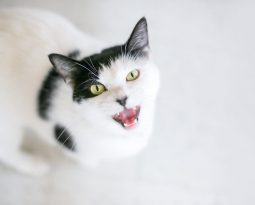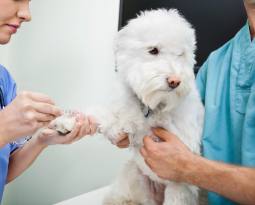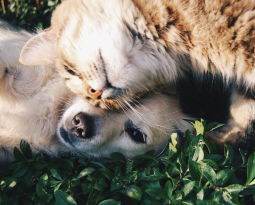As veterinarians, we cannot emphasize enough the importance of taking preventive measures to avoid heat exhaustion in our beloved pets, particularly during the hot summer months. Heat exhaustion, also known as heatstroke, can be a life-threatening condition for pets and requires immediate veterinary attention. In this blog, let’s discuss the signs, causes, and prevention measures for heat exhaustion in pets.
What is Heat Exhaustion?
Heat exhaustion is a serious condition that occurs when a pet’s body temperature rises to an abnormal level due to excessive heat exposure. A pet’s body temperature should typically be between 100.5°F and 102.5°F. When their body temperature exceeds 104°F, it can cause their body to stop functioning normally, leading to potential organ failure and even death.
What Does Heat Exhaustion in Pets Look Like?
There are various signs of heat exhaustion in pets, and recognizing them early is crucial for prompt treatment. The common signs of heat exhaustion include excessive panting, lethargy, dehydration, drooling, dry nose, red gums, vomiting, diarrhea, loss of coordination, and collapse. If your pet shows any of these symptoms, it is essential to take them to the veterinarian immediately.
What Are The Causes Of Heat Exhaustion?
Pets are more susceptible to heat exhaustion than humans, as they do not have the ability to regulate their body temperature as effectively as we do. They rely on panting and sweating through their paw pads to cool down their bodies. However, if the heat is too much, they can quickly become overheated, leading to heat exhaustion. Some of the causes of heat exhaustion in pets include:
- Leaving pets in a parked car: Even with the windows rolled down, parked cars can quickly become too hot for pets to handle. In just a few minutes, a car can reach an internal temperature of 120°F or higher.
- Strenuous exercise: Overexertion in hot weather can lead to heat exhaustion. Avoid taking your pets for runs or long walks during the hottest parts of the day.
- Lack of access to shade and water: Pets need access to shade and water at all times, especially during the hot summer months. Make sure your pet has access to clean water and a shaded area to rest in.
- Breed and age: Certain breeds of dogs, such as bulldogs, pugs, and boxers, are more prone to heat exhaustion due to their short snouts, which can make it difficult for them to breathe. Older pets and those with underlying medical conditions are also more at risk of heat exhaustion.
How Can You Prevent Heat Exhaustion In Pets?
The good news is that heat exhaustion is preventable! Here are some ways to help prevent your pets from getting overheated:
- Never leave your pet in a parked car: Even with the windows rolled down, it is never safe to leave your pet in a parked car, even for a short period.
- Limit exercise during the hottest parts of the day: Try to take your pets for walks or exercise in the early morning or late evening when the temperatures are cooler.
- Provide access to shade and water: Make sure your pets have access to a shaded area and clean water at all times. Consider placing multiple water bowls around your home or yard.
- Keep your home cool: Make sure your home is adequately cooled during the hot summer months. Consider using air conditioning or fans to keep the temperature comfortable for your pets.
- Be aware of the signs of heat exhaustion: Knowing the signs of heat exhaustion can help you recognize it early and seek veterinary attention before it becomes life-threatening.
In conclusion, heat exhaustion can be a serious condition that can be life-threatening for pets. It is essential to take preventive measures to avoid heat exhaustion during the hot summer months. Remember to never leave your pets in a parked car, limit exercise during the hottest parts of the day, provide access to shade and water, keep your home cool, and be aware of the signs of heat exhaustion.
If you suspect that your pet is suffering from heat exhaustion, it is essential to act quickly. Move them to a cool, shaded area and offer them water to drink. Wet their body with cool water or place them in a cool bath to help bring their body temperature down. However, do not use ice water, as it can cause their body temperature to drop too quickly and lead to shock. Seek veterinary attention immediately — if you’re in Tucson, give Acoma Animal Clinic a call right away!







